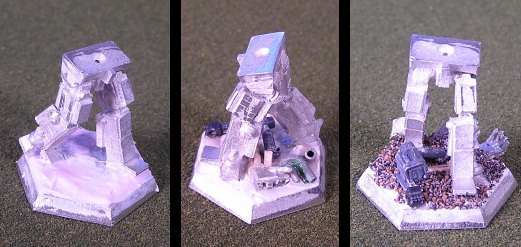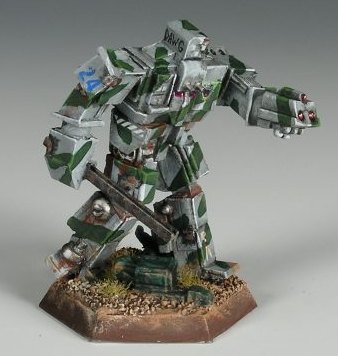

This tutorial is an article I wrote as part of the Last Painter Standing II contest on The Miniatures Page [TMP] in March 2006. I chose the Matador for Round 1. Though this mini has been in production for several years, it remains fairly obscure. To me, it's one of the more under-rated minis available. It comes in 4 parts plus the base, as shown below.
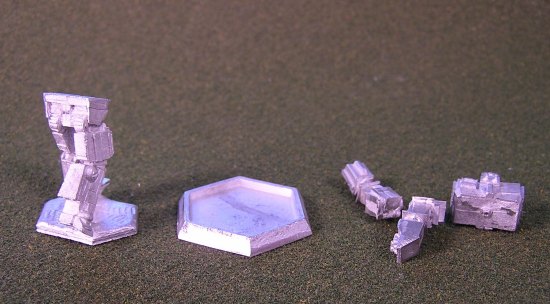
As I thought about the theme, I decided what my basic concept would be: the 'Mech would be striding through a scrap yard, holding a found object as a melee weapon, and painted in a beat-up camo scheme. The "meat" of the tutorial would be to focus on getting a beat-up, dirty, worn look for the mini because it can be challenging to do that without making the mini look poorly painted.
The first step is to assemble the mini. I like to attach joints by "pinning" them. This helps add strength to a joint, and can be critical to avoid having small parts break off later. The Matador doesn't badly need pinning, but I did so out of habit. The procedure is to drill holes in both pieces at the joint, and insert a small brass rod between them. If a mini is properly pinned, you should be able to assemble it without glue to see how the parts fit. I understand that most people use a contraption known as a "pin vise" to drill the holes, but I use a Sears Craftsman power drill and a #64 bit. If you're not careful you can easily snap the bit, but I can usually get a bit to last for several dozen minis before breaking. The picture below shows one of the brass pins I added. I used 3 in all, one for each arm and one for the waist.
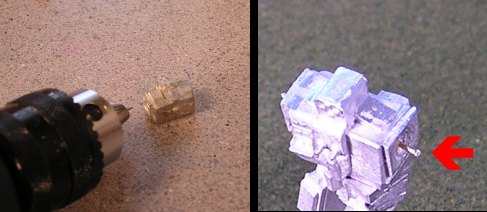
Next, I mentioned that I wanted the mini to be carrying a melee weapon. I used a little styrene I-beam (available for a few cents at model railroad stores) for a club. The hands on the mini are closed, so I opened the right fist with an S-cut from a jeweler's saw. After gluing the I-beam into place, I bent the thumb back down to complete the grip.
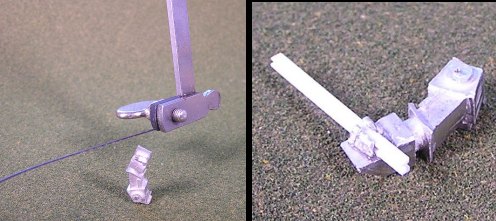
Before assembling the mini, I set up the "junk" on the base. First I glued the mini to the base and filled in the gaps with drywall spackle (a cheap yet effective material). Once the spackle was dry, I glued various scraps from my parts box onto the base. Finally, I coated the open areas on the base with white glue and dumped a bunch of fine rubble onto it.
